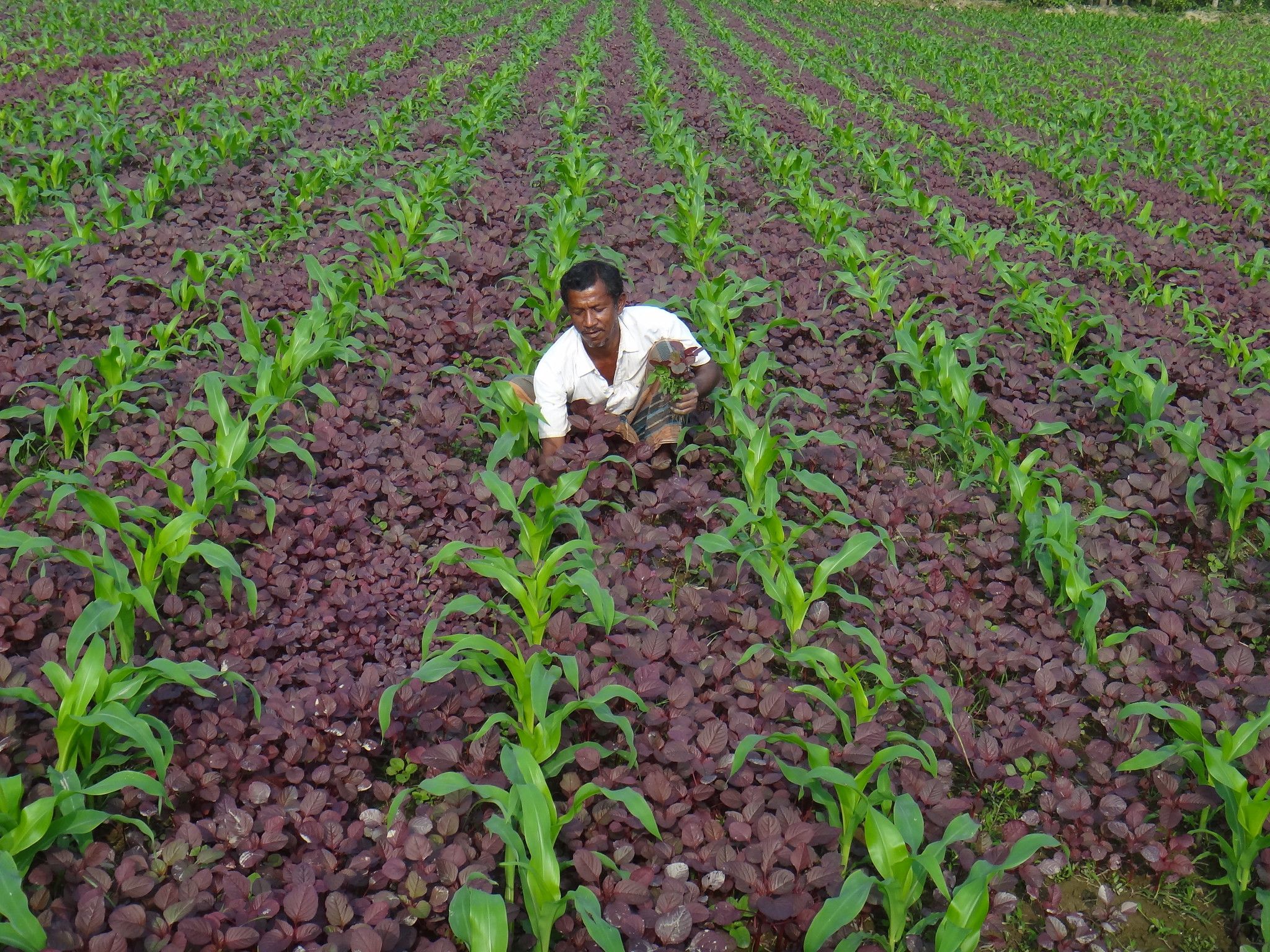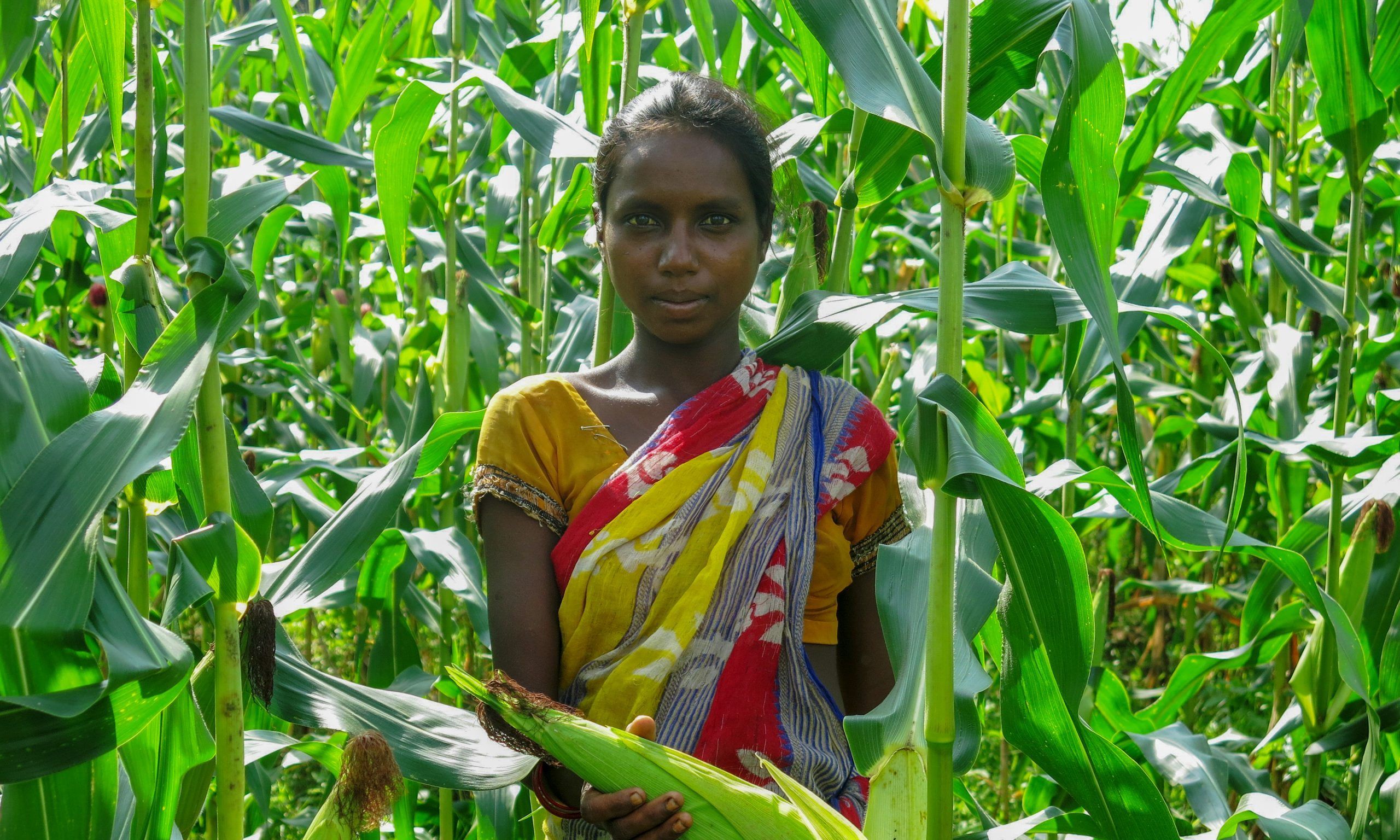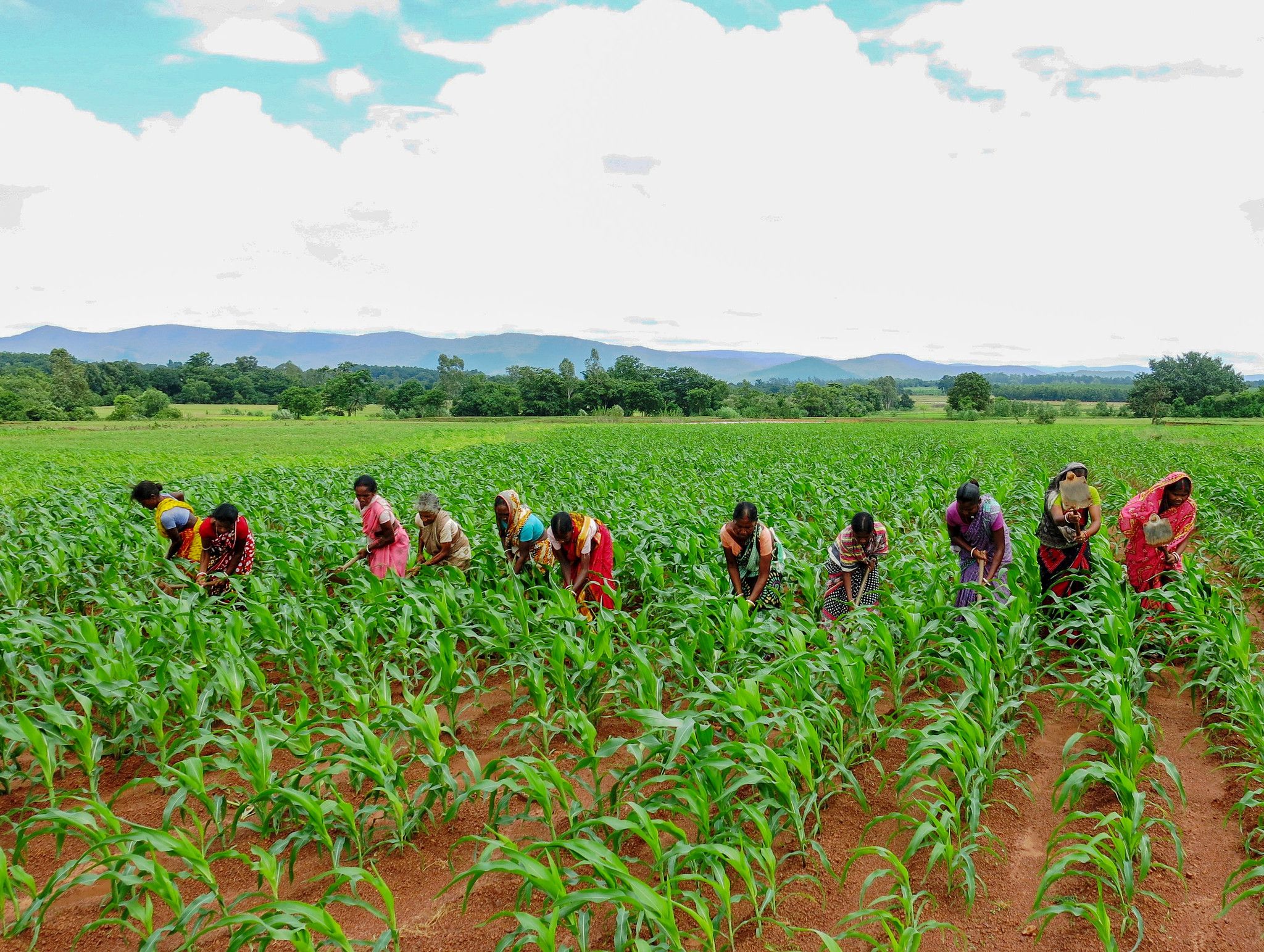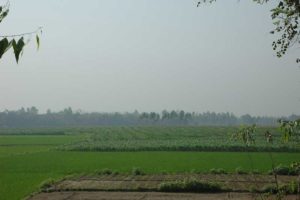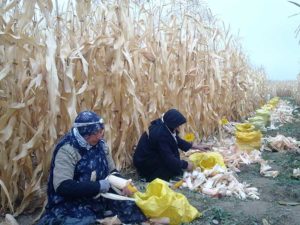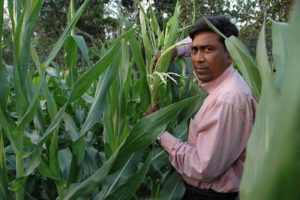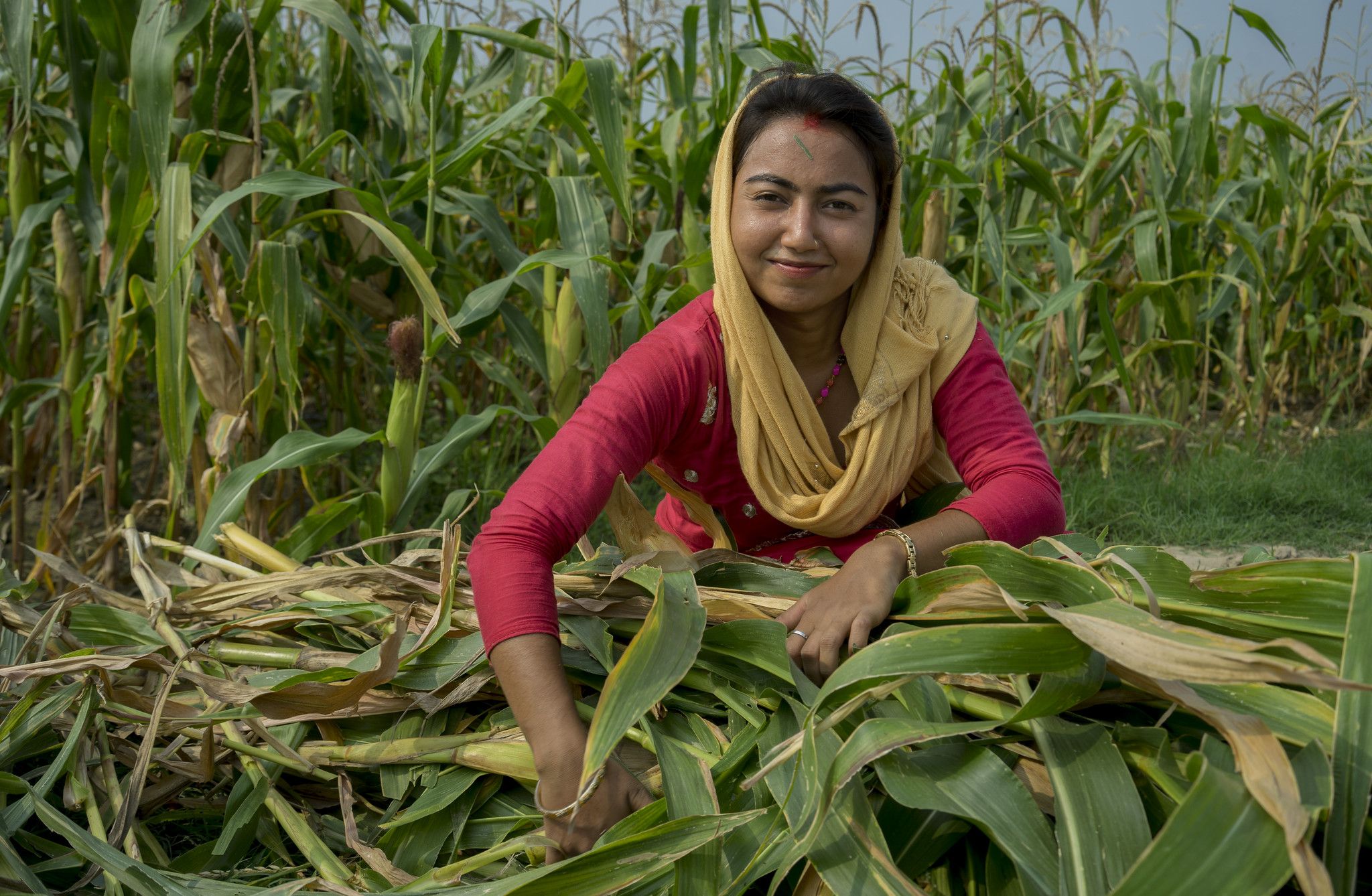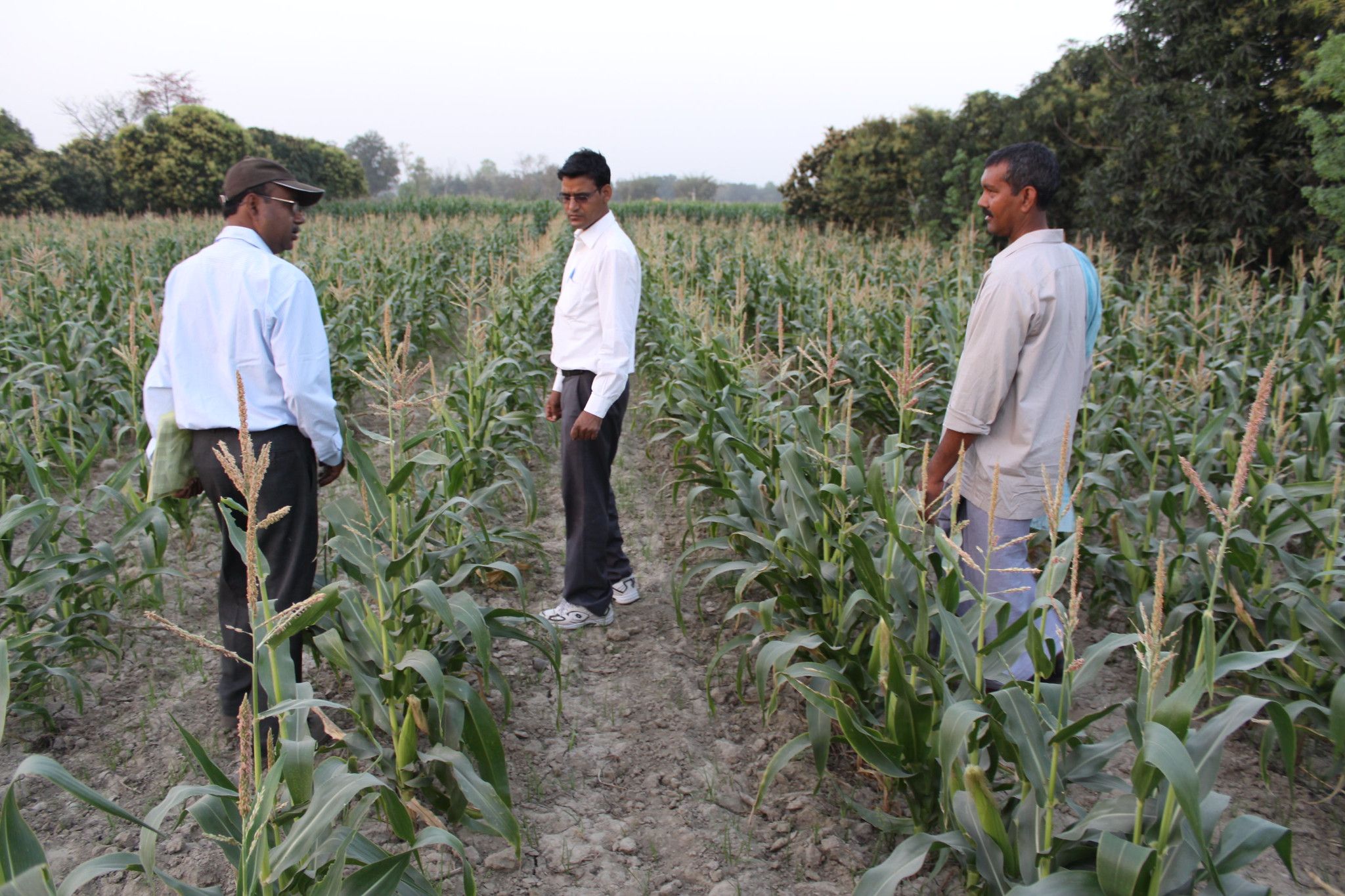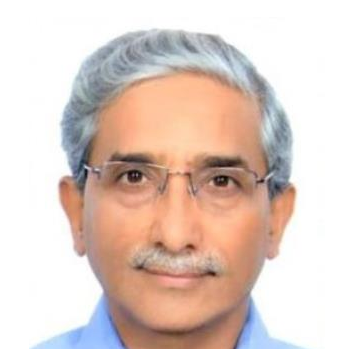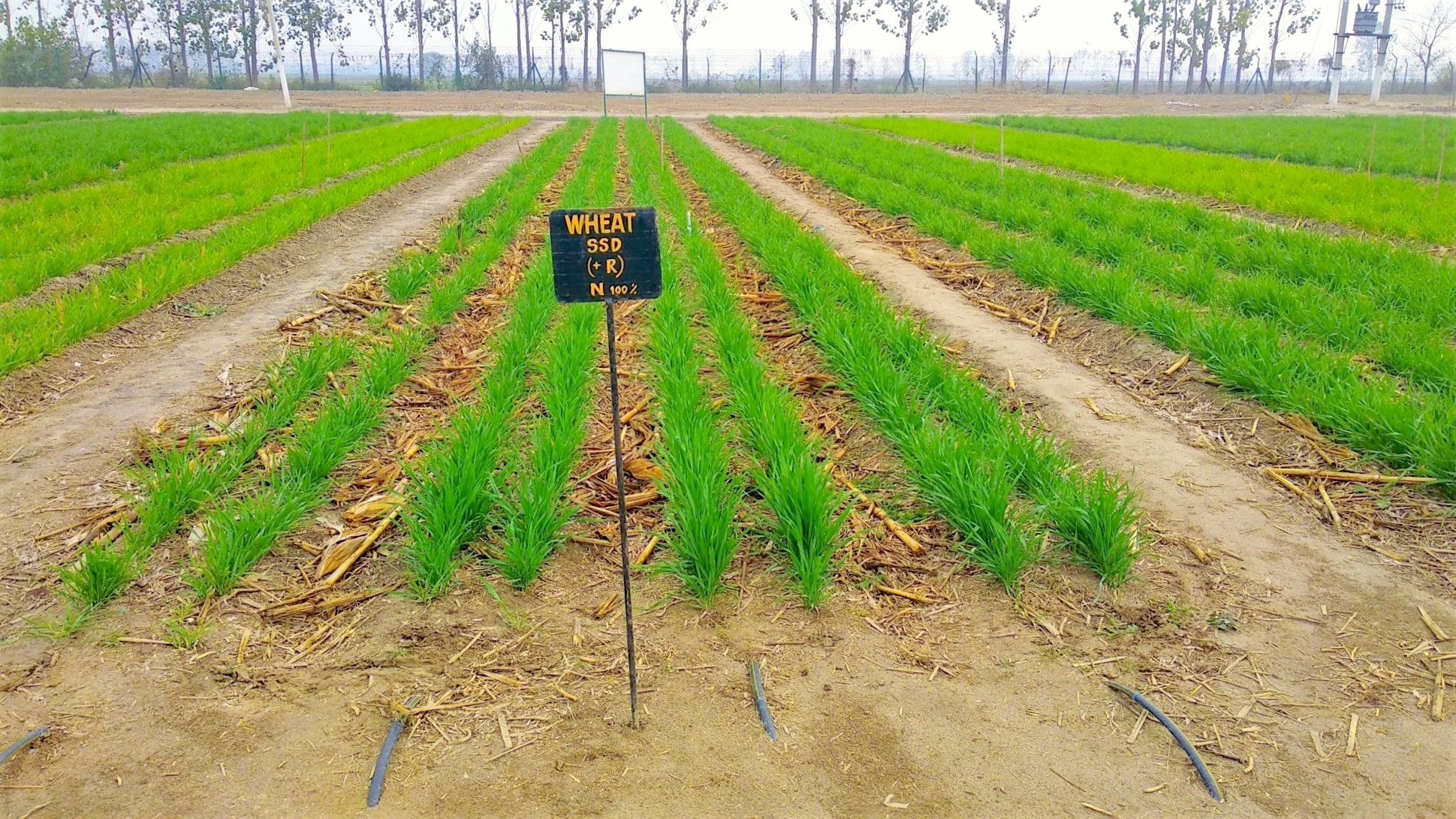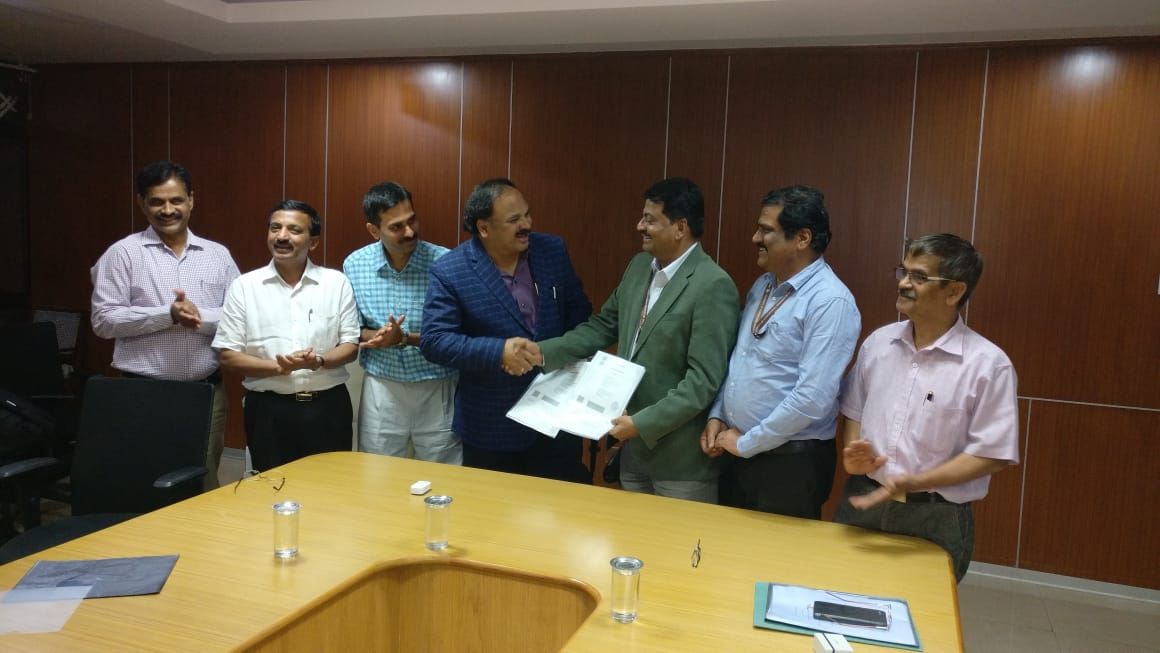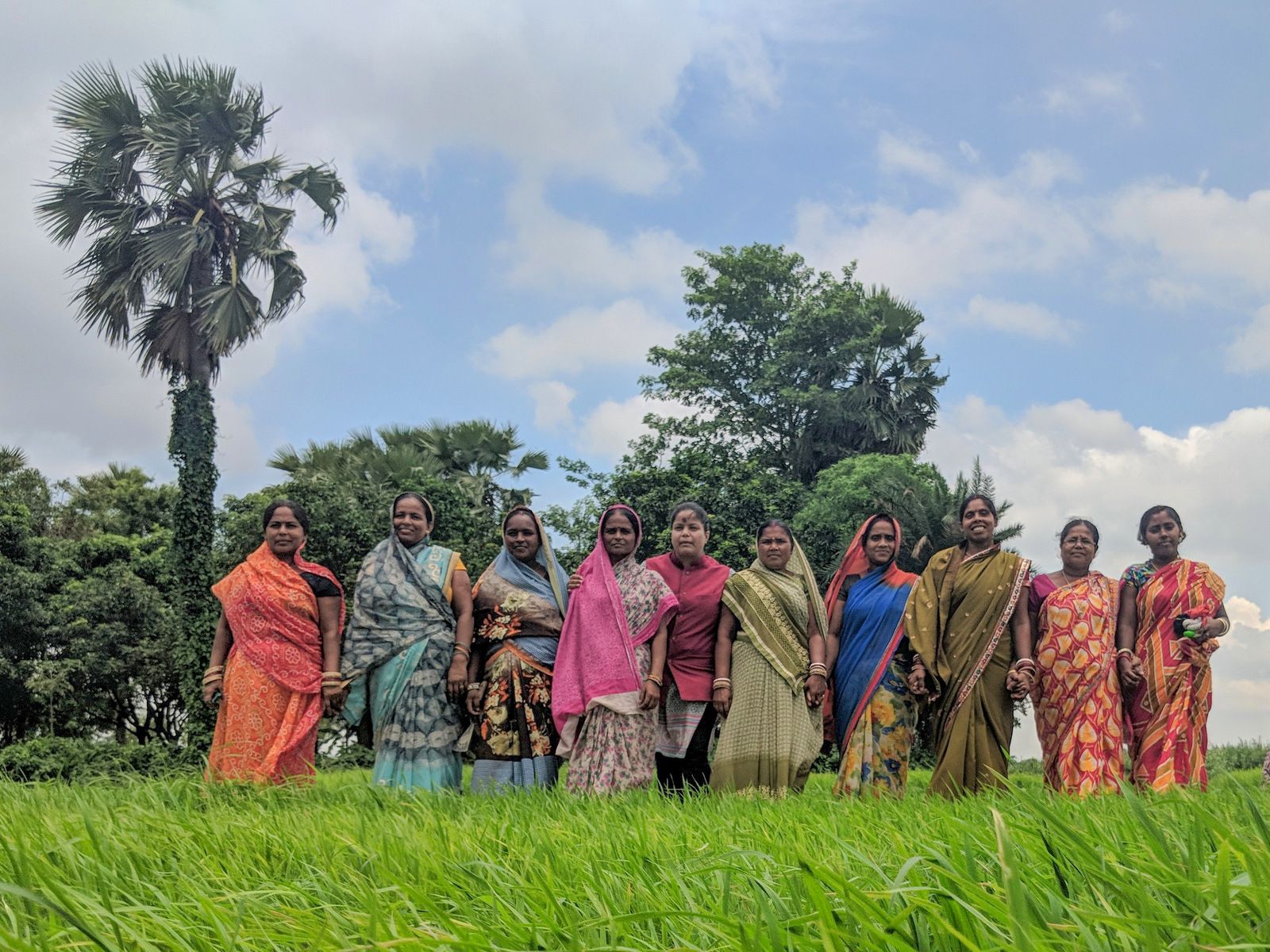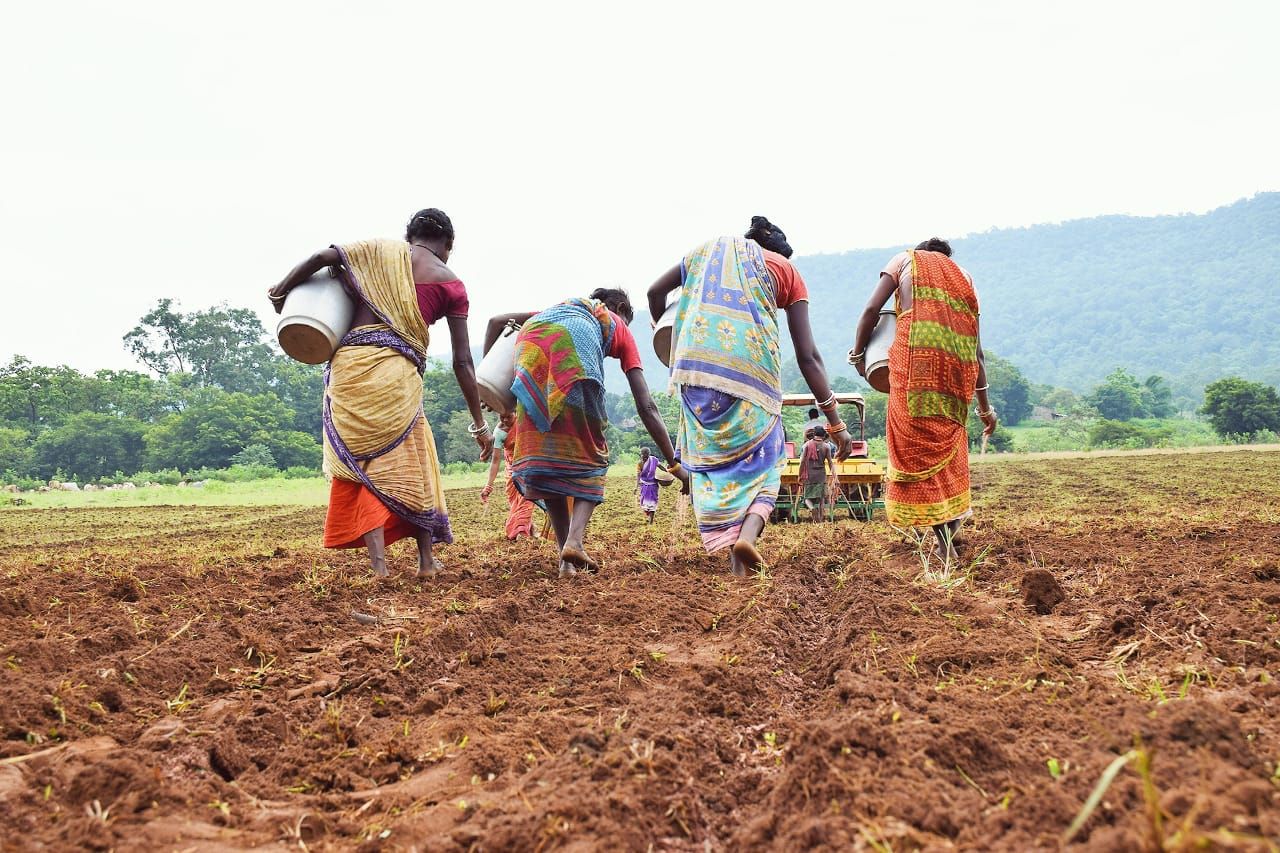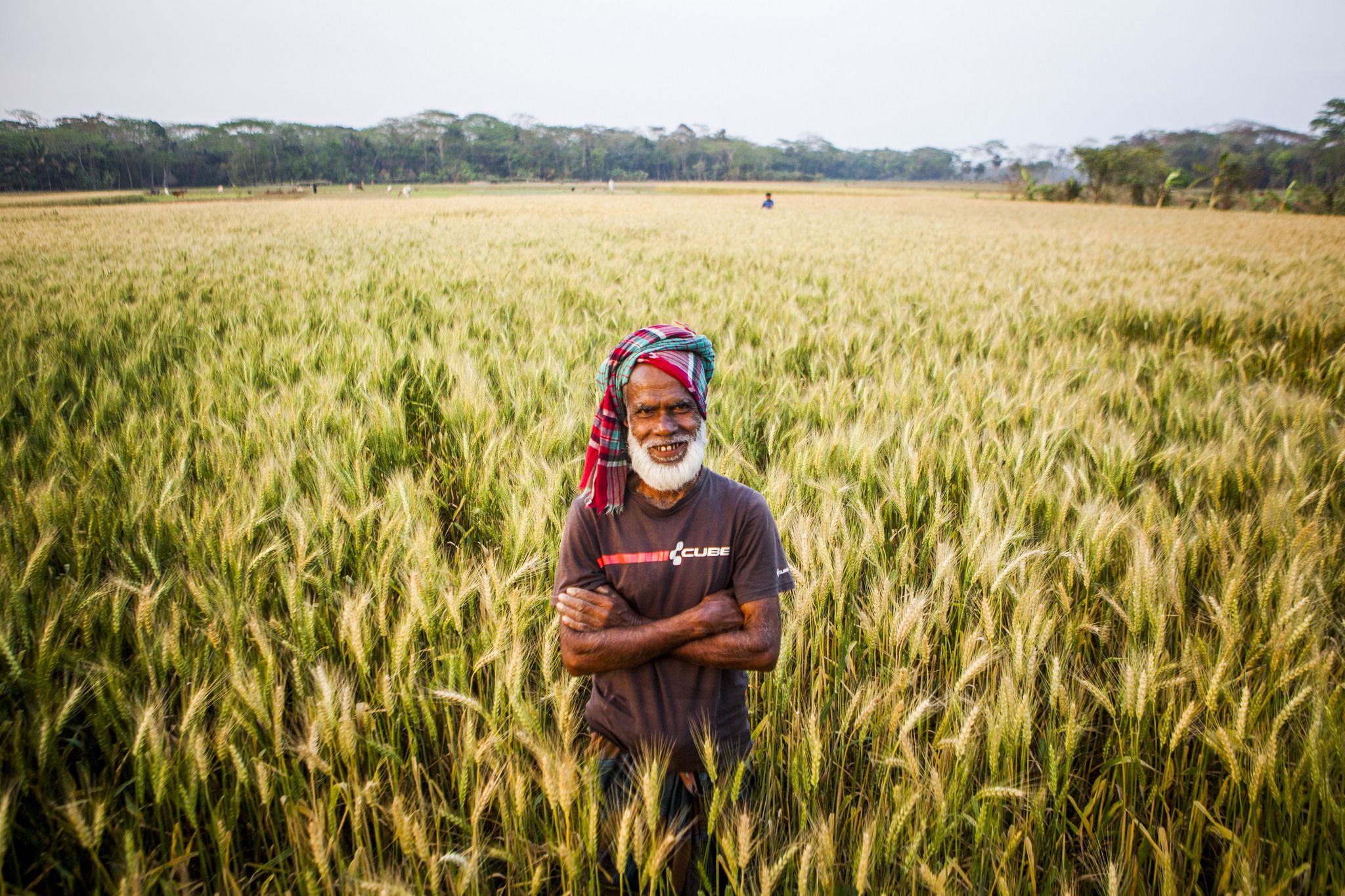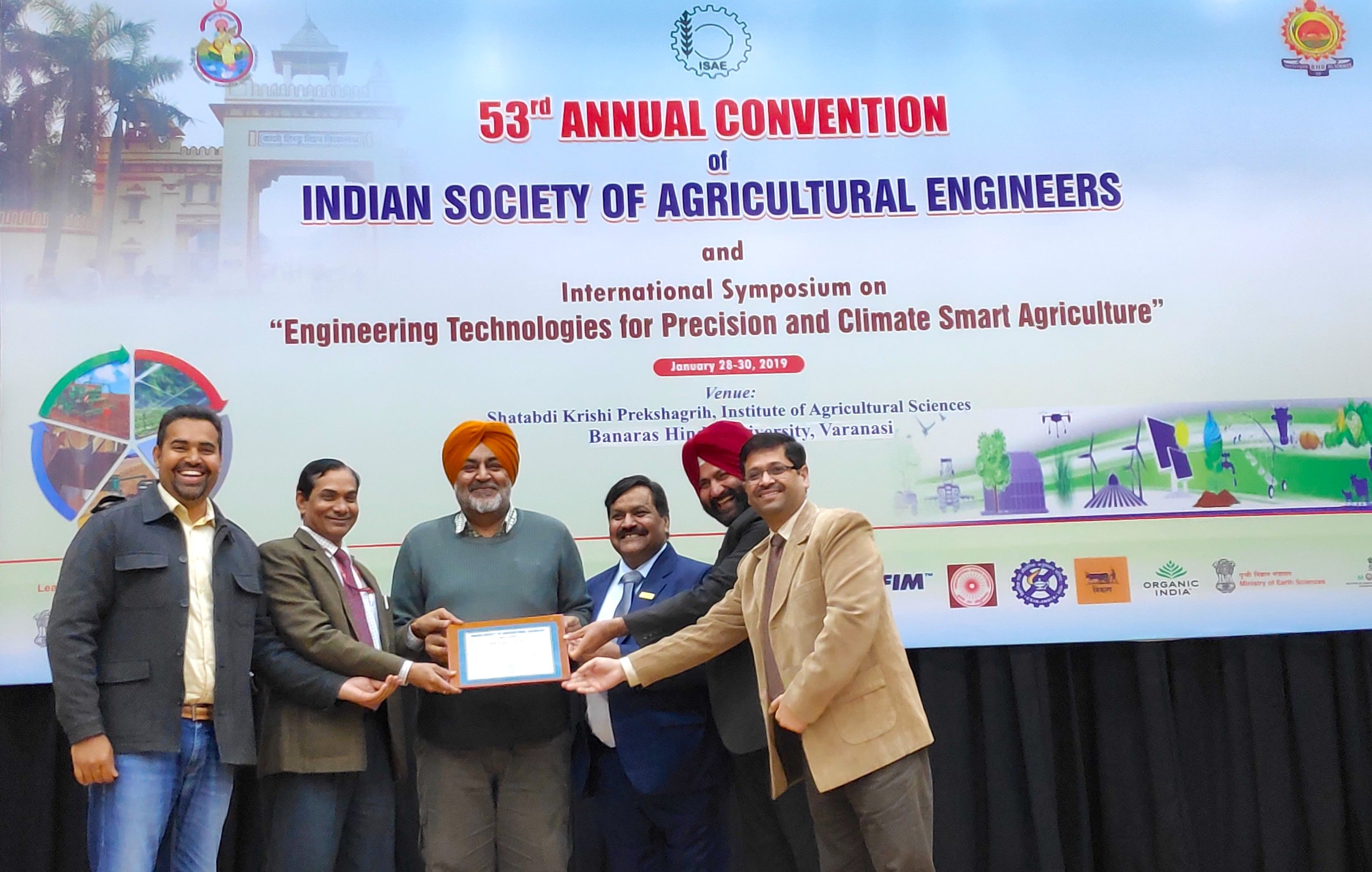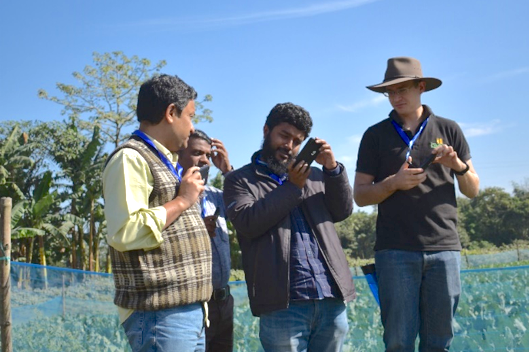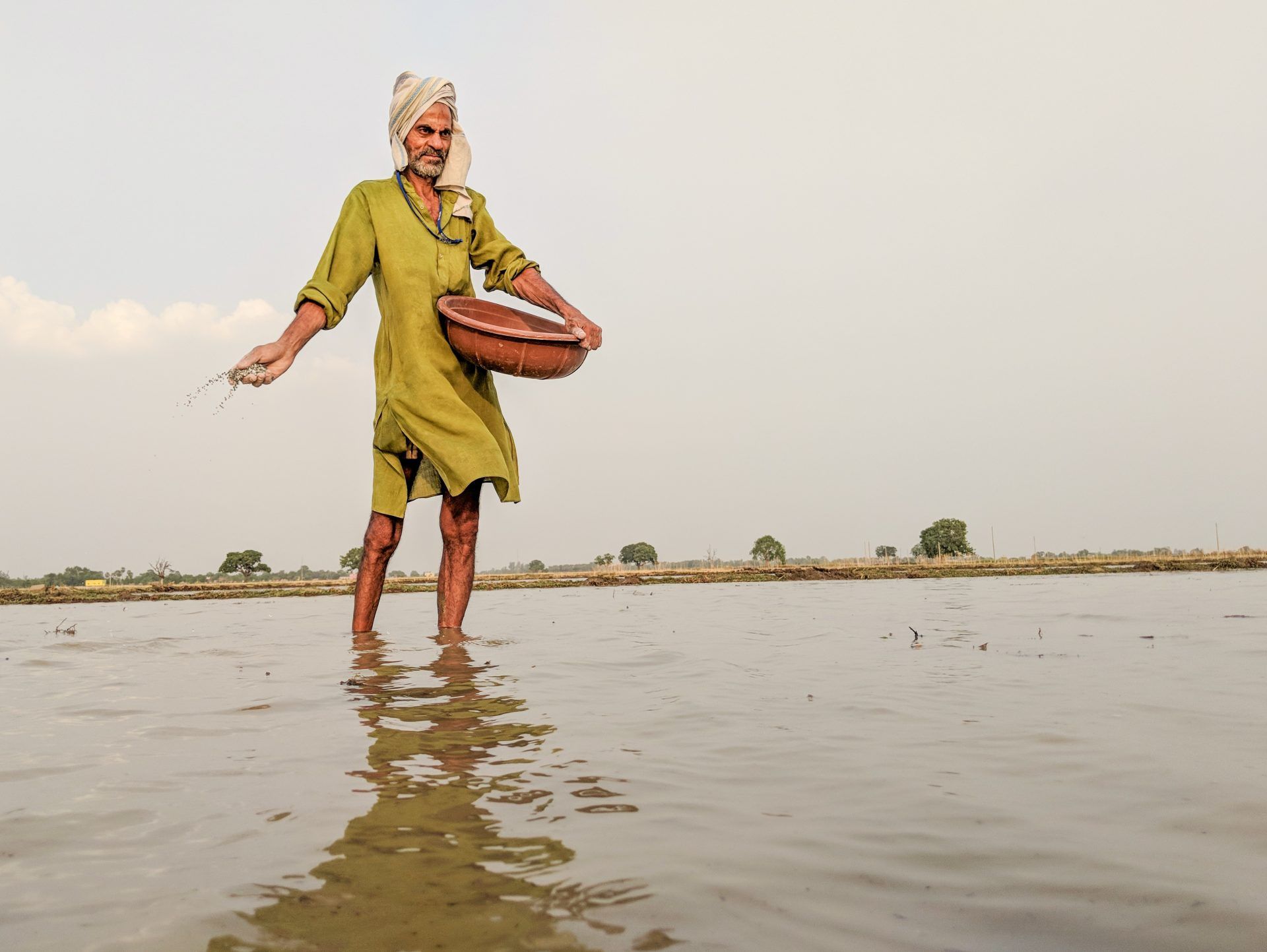Location: India
For more information, contact CIMMYT’s India office.
Improved Maize for Tropical Asia (IMTA)
The Improved Maize for Tropical Asia (IMTA) is employing modern maize breeding techniques to develop and deploy new, climate-resilient maize hybrids, including traits important for identified niche markets across tropical Asia.
Principal Coordinator: B.S. Vivek
Heat Stress Tolerant Maize for Asia (HTMA)
The Heat Stress Tolerant Maize (HTMA) for Asia project is a public-private alliance that targets resource-poor people and smallholder farmers in South Asia who face weather extremes and climate-change effects. HTMA aims to create stable income and food security for resource-poor maize farmers in South Asia through development and deployment of heat-resilient maize hybrids.
South Asian farmlands have been increasingly experiencing climate change-related weather extremes. If current trends persist until 2050, major crop yields and the food production capacity of South Asia will decrease significantly – by 17 percent for maize – due to climate change-induced heat and water stress.
In response, CIMMYT and partners are developing heat stress-resilient maize for Asia. The project leverages the germplasm base and technical expertise of CIMMYT in breeding for abiotic stress tolerance, coupled with the research capacity and expertise of partners.
OBJECTIVES
- Future climate data obtained from the recent CIMP5 database, and future and current heat stress hot-spots in South Asia are mapped
- Genome-wide association studies revealed multiple haplotypes significantly associated heat tolerance, including nine significant haplotype blocks (~200 kb) for grain yield explaining 4 to 12% phenotypic variation individually with the effect size varied up to 440 kg/ha.
- A total of 17 first generation heat tolerant hybrids formally licenced to project partners for deployment and scale-out in their targeted geographies/market in stress-prone ecologies of South Asia
- New base germplasm, including early generation lines and pedigree populations, with enhanced levels of heat tolerance shared with partners to use in their own breeding programs.
- Over 130 maize researchers and technical staff from India, Nepal, Pakistan and Bangladesh, including 32 women and 99 men, were trained on various aspects of developing stress-resilient maize through four training course workshops organized under the project.
- Strong phenotyping network for heat stress in South Asia, with well-equipped locations and trained representatives.
FUNDING INSTITUTIONS
- United States Agency for International Development – Feed the Future
PRINCIPAL COORDINATOR
Affordable, Accessible Asian (AAA) Drought Tolerant Maize Project
Smallholder maize farmers in marginal environments in Asia are prone to drought due to either scanty/erratic rainfall or falling groundwater levels.
The Affordable, Accessible, Asian (AAA) Drought Tolerant Maize Project is a partnership among CIMMYT, the Syngenta Foundation for Sustainable Agriculture, national agricultural research systems of Indonesia, Philippines and Vietnam to develop drought-tolerant maize for smallholder farmers in Asia.
AAA combines complementary technologies and comparative advantages, such as CIMMYT’s global expertise in drought-tolerant maize breeding, Syngenta’s elite germplasm bred for Asia, the national partners’ local knowledge of farmers’ requirements and their germplasm testing network.
This project covers a gamut of upstream and downstream activities: marker discovery (genome-wide association studies); trait discovery (understanding root structure and function-lysimetrics); marker applications (genomic selection); drought phenotyping facilities (rhizotronics, rain-out shelters; managed drought stress screening locations); germplasm development; hybrid deployment; and linking with potential hybrid commercialization partners.
Objectives
- Validation of drought-tolerant genetic markers
- Rhizotronics studies reveal importance of root functional traits in determining drought tolerance
- Genomic selection is proving to be a powerful strategy for developing improved source populations
- Promising results from hybrid trials in India and Indonesia indicate the value of this innovative partnership model
Funding Institutions
- Syngenta Foundation for Sustainable Agriculture (SFSA)
Principal Coordinator
Bindiganavile Sampath Vivek
Climate Resilient Maize for Asia (CRMA)
Climate Resilient Maize for Asia is supported by Germany’s development agency GIZ, and implemented as a public-private partnership, which targets enhanced resilience among resource-poor, maize-based farming families in South and Southeast Asia by providing them with abiotic stress-tolerant maize hybrids adapted to rain-fed stress-prone production systems for crop diversification, intensification and higher yields.
Most of the maize in Asia is grown as a rain-fed crop, which is prone to vagaries of seasonal monsoon rains. This is clearly reflected in the productivity of maize under rain-fed systems — usually less than half of the irrigated system. The erratic distribution pattern of monsoon rains results in drought or water logging at different crop growth stages, which is the main factor responsible for relatively low productivity of rain-fed maize. Due to the possibility of uncertain economic returns, farmers often hesitate to invest in improved seed, fertilizers and inputs, which further add to poor yields of rain-fed maize. Climate change effects are further threatening an already challenging maize mega-environment in the Asian tropics, which are identified as subject to climate change effects, with high vulnerability and low adoption capacity.
The project deals with high priorities of Asian stakeholders related to improving maize production in the face of current and anticipated effects of climate change and access to diverse and valuable maize germplasm, building upon the GIZ-funded project known as “Abiotic stress tolerant maize for increasing income and food security among the poor in South and Southeast Asia,” where significant progress is being made towards understanding the rain-fed stress-prone agro-ecologies in South and Southeast Asia, development of improved maize germplasm with enhanced levels of tolerance to drought, waterlogging or combined stress tolerance.
OBJECTIVES
- Using data on elevation, aridity index and mean annual rainfall, a climate similarity map with a total 30 zones was developed for South Asia. This is useful in planning regional hybrid trials respective environment analogue.
- New hybrid combinations by crossing promising stress-tolerant lines and evaluated across moisture regimes, including managed drought and waterlogging stresses, and optimal conditions, and a set of 50 promising hybrids are ready for large-scale adaptive trials.
- Among the inbred lines developed under the project, four most promising lines were globally released CML (CIMMYT Maize Lines), namely CML-562, CML-563, CML-564 and CML-565, for use in low-land tropical breeding programs targeting stress-prone rainfed environment.
- Total 18 Quantitative Trait Locus (QTLs) for grain yield under waterlogging and 21 QTLs for grain yield and anthesis-siling interval under drought were identified using genome-wide association studies and analyses of bi-parental populations. These validated genomic regions are candidate for introgression into elite Asia-adapted genetic background.
- Breeder ready marker assays (KASP assays) have been developed for the 18 significant genomic regions that typically explained more than 10 percent of phenotypic variance under water-logging stress.
- Protocol for rapid-cycle genomic selection (RC-GS) optimized with regards to constitution of suitable target population, and suitable statistical model for genomic selection.
- Genetically enhanced cycle (C2) of two multi-parent synthetic populations were developed by inter-mating top 5 percent progenies with high genotypically estimated breeding values (GEBVs) were submitted for subjecting to double haploid for deriving new generation of stress-resilient maize lines
FUNDING INSTITUTIONS
- Germany’s development agency GIZ
PRINCIPAL COORDINATOR
Cereal Systems Initiative for South Asia (CSISA)
Intensive cereal cropping systems that include rice, wheat and/or maize are widespread throughout South Asia. These systems constitute the main economic activity in many rural areas and provide staple food for millions of people. The decrease in the rate of growth of cereal production, for both grain and residue, in South Asia is therefore of great concern. Simultaneously, issues of resource degradation, declining labor availability and climate variability pose steep challenges for achieving the goals of improving food security and rural livelihoods.
The Cereal Systems Initiative for South Asia (CSISA) was established in 2009 to promote durable change at scale in South Asia’s cereal-based cropping systems.
The project’s aim is to enhance the productivity of cereal-based cropping systems, increase farm incomes and reduce the environmental footprint of production through sustainable intensification technologies and management practices.
Operating in rural “innovation hubs” in Bangladesh, India and Nepal, CSISA complements regional and national efforts and involves public, civil society and private sector partners in the development and dissemination of improved cropping systems, resource-conserving management technologies, policies and markets. CSISA supports women farmers by ensuring their access and exposure to modern and improved technological innovations, knowledge and entrepreneurial skills that can help them become informed and recognized decision makers in agriculture.
The project is led by CIMMYT with partners the International Rice Research Institute and the International Food Policy Research Institute and funded by the U.S. Agency for International Development and the Bill & Melinda Gates Foundation.
OBJECTIVES
- Promote resource-conserving practices, technologies and services that increase yield with less water, labor and input costs
- Impart new knowledge on cropping management practices, from applied research
- Improve access to market information and enterprise development.
- Strengthen policy analysis to remove constraints to the adoption of new technologies
- Build strategic partnerships and capacity to help sustain and enhance the scale of benefits of improved cereal growth
Core research to impact themes within CSISA include:
- Coping with climate extremes in rice-wheat cropping systems
- Accelerating the emergence of mechanized solutions for sustainable intensification
- Strengthening the foundations of agro-advisory and precision management through knowledge organization and data integration at scale
- Increasing the capacity of partners to conduct participatory science and field reconnaissance to target and prioritize development interventions
Arun Kumar Joshi
Arun Kumar Joshi is engaged in developing climate-resilient, high-yielding, nutritive wheat varieties for South Asia. In addition, he is engaged in various collaborations on climate-resilient agriculture and seed system. He has facilitated the development and release of more than five dozen wheat varieties in South Asia through a significant contribution to climate resilience, disease resistance, conservation agriculture, and Zinc rich biofortification. His research findings are published in 188 refereed journal articles, 212 extension articles and manuals, 10 books or book chapters, and 136 symposia proceedings, and has a patent.
Joshi, a former Professor of Banaras Hindu University, is a fellow of the three most prestigious science academies in India – the Indian National Science Academy (INSA), the National Academy of Science in India (NASI), and the National Academy of Agriculture Sciences (NAAS). In 2014, he was awarded the Jeanie Borlaug Laube WIT Mentor Award from the Borlaug Global Rust Initiative at Cornell University.
Innovative irrigation promises “more crop per drop” for India’s water-stressed cereals
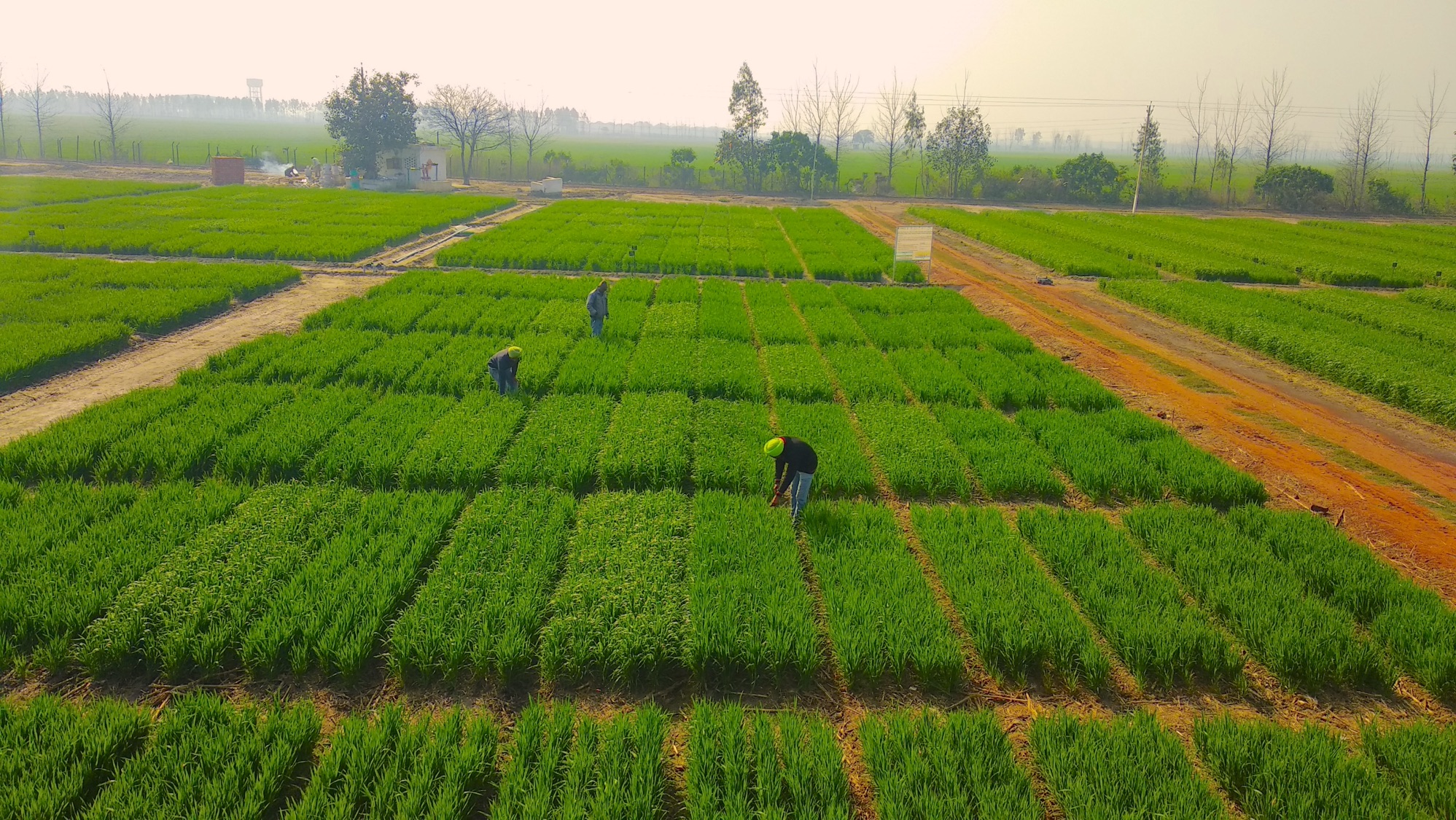
On World Water day, researchers show how India’s farmers can beat water shortages and grow rice and wheat with 40 percent less water
India’s northwest region is the most important production area for two staple cereals: rice and wheat. But a growing population and demand for food, inefficient flood-based irrigation, and climate change are putting enormous stress on the region’s groundwater supplies. Science has now confronted this challenge: a “breakthrough” study demonstrates how rice and wheat can be grown using 40 percent less water, through an innovative combination of existing irrigation and cropping techniques. The study’s authors, from the International Maize and Wheat Improvement Center (CIMMYT), the Borlaug Institute for South Asia (BISA), Punjab Agricultural University and Thapar University, claim farmers can grow similar or better yields than conventional growing methods, and still make a profit.
The researchers tested a range of existing solutions to determine the optimal mix of approaches that will help farmers save water and money. They found that rice and wheat grown using a “sub-surface drip fertigation system” combined with conservation agriculture approaches used at least 40 percent less water and needed 20 percent less Nitrogen-based fertilizer, for the same amount of yields under flood irrigation, and still be cost-effective for farmers. Sub-surface drip fertigation systems involve belowground pipes that deliver precise doses of water and fertilizer directly to the plant’s root zone, avoiding evaporation from the soil. The proposed system can work for both rice and wheat crops without the need to adjust pipes between rotations, saving money and labor. But a transition to more efficient approaches will require new policies and incentives, say the authors.
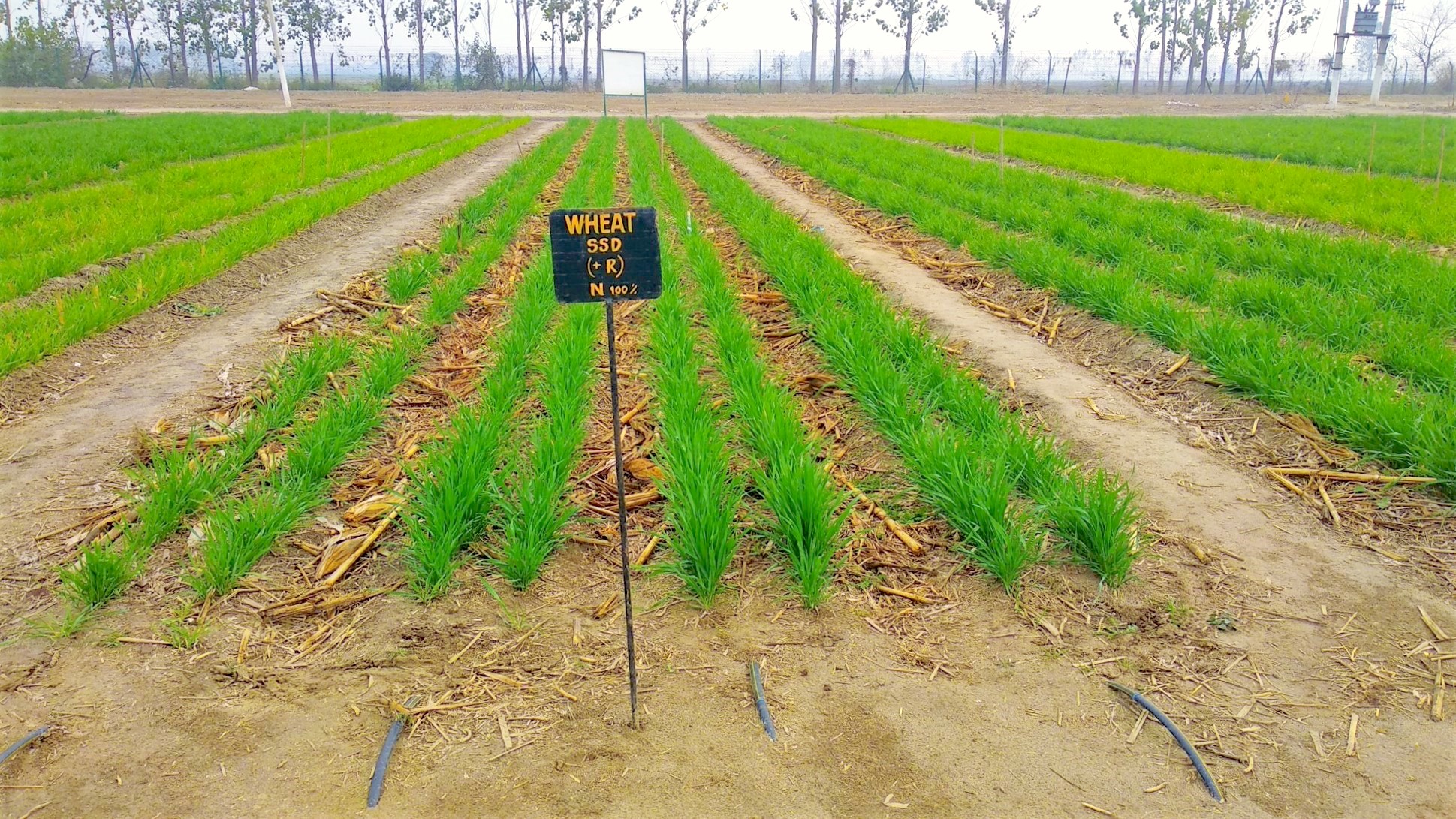
Read the full story:
Innovative irrigation system could future-proof India’s major cereals. Thomsom Reuters Foundation News, 20 March 2019.
Read the study:
Sidhu HS, Jat ML, Singh Y, Sidhu RK, Gupta N, Singh P, Singh P, Jat HS, Gerard B. 2019. Sub-surface drip fertigation with conservation agriculture in a rice-wheat system: A breakthrough for addressing water and nitrogen use efficiency. Agricultural Water Management. 216:1 (273-283). https://doi.org/10.1016/j.agwat.2019.02.019
The study received funding from the CGIAR Research Program on Wheat (WHEAT), the Indian Council of Agricultural Research (ICAR) and the Government of Punjab. The authors acknowledge the contributions of the field staff at BISA and CIMMYT based at Ludhiana, Punjab state.
CIMMYT and UAS-Bangalore to establish a maize doubled haploid facility in Karnataka, India
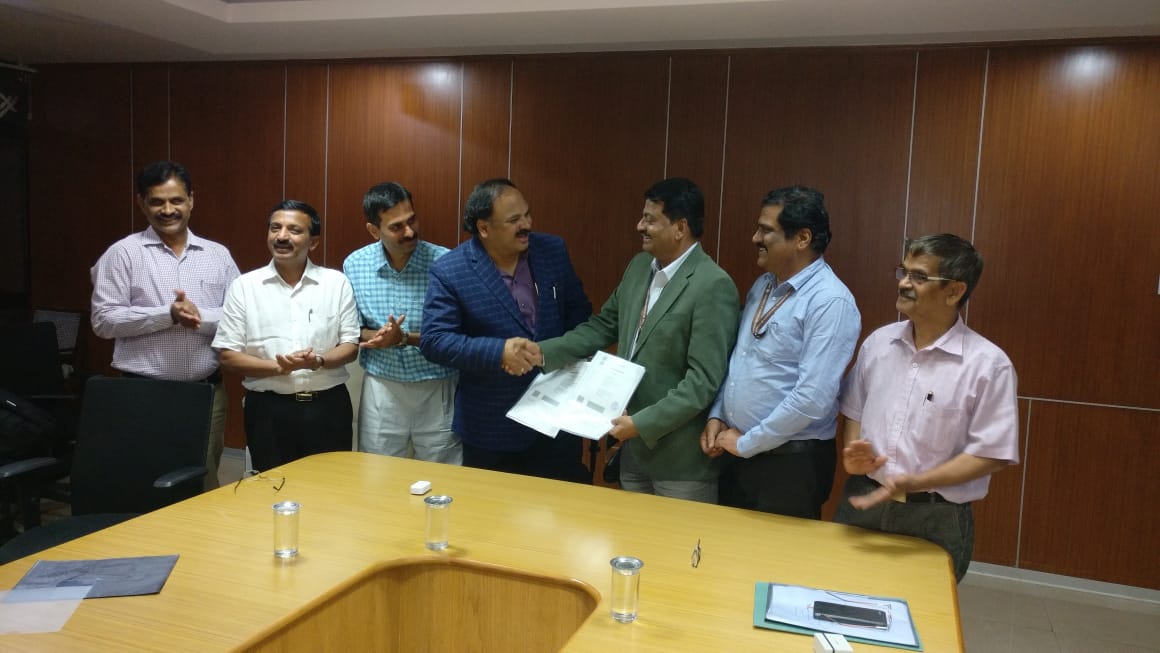
KARNAKATA, India (CIMMYT) — The International Maize and Wheat Improvement Center (CIMMYT) and the University of Agricultural Sciences-Bangalore (UAS-Bangalore) have signed a collaboration agreement for establishing a maize doubled haploid (DH) facility at the Agricultural Research Station in Kunigal (ARS-Kunigal), Tumkur district, Karnataka state, India.
CIMMYT will establish and operate the maize DH facility, including field activities and the associated laboratory. Occupying 12 acres of land, the facility is estimated to produce at least 30,000 DH lines a year. CIMMYT hopes the facility to be operational by the last quarter of 2019.
The maize DH facility, funded by the CGIAR Research Program on Maize (MAIZE), fulfills a very important requirement of the region. It has the potential to accelerate maize breeding and hybrid development and significantly increase genetic gains through maize breeding in Asia. During the 13th Asian Maize Conference in Ludhiana, India (October 8-10, 2018), several partners — including the Indian Institute of Maize Research (ICAR-IIMR) — emphasized the urgent need for a state-of-the-art maize DH facility that could serve breeding programs across Asia.
“This is indeed a major landmark for maize breeding, especially in the public sector, not only in India, but also in Asia,” said B.M. Prasanna, Director of CIMMYT’s Global Maize Program and the CGIAR Research Program on Maize (MAIZE). “The facility will provide maize DH development services, not only for the maize breeding programs of CIMMYT and UAS-B, but also for national agricultural research system institutions and small and medium-sized seed companies engaged in maize breeding and interested to pursue DH-based advanced maize breeding strategies in Asia. DH technology, in combination with molecular marker-assisted breeding, can significantly increase genetic gains in maize breeding.”
“The maize doubled haploid facility … will be the first of its kind in the public domain in Asia,” said S. Rajendra Prasad, Vice Chancellor of UAS-Bangalore. “The work done at this facility will certainly benefit the farmers of the state, country and the Asian region, by accelerating maize breeding and improving efficiencies.”
The signing of the collaboration agreement took place on February 18, 2019 at UAS-Bangalore’s campus in Bengaluru. CIMMYT was represented by B.M. Prasanna and BS Vivek, Senior Maize Breeder. UAS-Bangalore was represented by S. Rajendra Prasad; Mahabaleshwar Hegde, Registrar, and Y.G. Shadakshari, Director of Research.
The benefits of doubled haploid technology
DH maize lines are highly uniform, genetically pure and stable, and enable significant saving of time and resources in deriving parental lines, which are building blocks of improved maize hybrids.
Over the last 12 years, CIMMYT has worked intensively on optimizing DH technology for the tropics. Researchers released first-generation tropicalized haploid inducers in 2012, and second-generation tropicalized haploid inducers in 2017, in partnership with the University of Hohenheim, Germany. In 2017, CIMMYT developed more than 93,000 maize DH lines from 455 populations, and delivered them to maize breeders in Africa, Asia and Latin America.
INTERVIEW OPPORTUNITIES:
B.M. Prasanna – Director of CIMMYT’s Global Maize Program and the CGIAR Research Program on Maize (MAIZE).
FOR MORE INFORMATION, CONTACT THE MEDIA TEAM:
Jennifer Johnson – Maize Communication Officer, CIMMYT. J.A.JOHNSON@cgiar.org, +52 (55) 5804 2004 ext. 1036.
Support groups open women’s access to farm technologies in northeast India

Self-help groups in Bihar, India, are putting thousands of rural women in touch with agricultural innovations, including mechanization and sustainable intensification, that save time, money, and critical resources such as soil and water, benefiting households and the environment.
The Bihar Rural Livelihoods Promotion Society, locally known as Jeevika, has partnered with the Cereal Systems Initiative for South Asia (CSISA), led by the International Maize and Wheat Improvement Center (CIMMYT), to train women’s self-help groups and other stakeholders in practices such as zero tillage, early sowing of wheat, direct-seeded rice and community nurseries.
Through their efforts to date, more than 35,000 households are planting wheat earlier than was customary, with the advantage that the crop fully fills its grain before the hot weather of late spring. In addition, some 18,000 households are using zero tillage, in which they sow wheat directly into unplowed fields and residues, a practice that improves soil quality and saves water, among other benefits. As many as 5,000 households have tested non-flooded, direct-seeded rice cultivation during 2018-19, which also saves water and can reduce greenhouse gas emissions.
An autonomous body under the Bihar Department of Rural Development, Jeevika is also helping women to obtain specialized equipment for zero tillage and for the mechanized transplanting of rice seedlings into paddies, which reduces women’s hard labor of hand transplanting.
“Mechanization is helping us manage our costs and judiciously use our time in farming,” says Rekha Devi, a woman farmer member of Jeevika Gulab self-help group of Beniwal Village, Jamui District. “We have learned many new techniques through our self-help group.”
With more than 100 million inhabitants and over 1,000 persons per square kilometer, Bihar is India’s most densely-populated state. Nearly 90 percent of its people live in rural areas and agriculture is the main occupation. Women in Bihar play key roles in agriculture, weeding, harvesting, threshing, and milling crops, in addition to their household chores and bearing and caring for children, but they often lack access to training, vital information, or strategic technology.
Like all farmers in South Asia, they also face risks from rising temperatures, variable rainfall, resource degradation, and financial constraints.
Jeevika has formed more than 700,000 self-help groups in Bihar, mobilizing nearly 8.4 million poor households, 25,000 village organizations, and 318 cluster-level federations in all 38 districts of Bihar.
The organization also fosters access for women to “custom-hiring” businesses, which own the specialized implement for practices such as zero tillage and will sow or perform other mechanized services for farmers at a cost. “Custom hiring centers help farmers save time in sowing, harvesting and threshing,” said Anil Kumar, Program Manager, Jeevika.
The staff training, knowledge and tools shared by CSISA have been immensely helpful in strengthening the capacity of women farmers, according to D. Balamurugan, CEO of Jeevika. “We aim to further strengthen our partnership with CSISA and accelerate our work with women farmers, improving their productivity while saving their time and costs,” Balamurugan said.
CSISA is implemented jointly by the International Maize and Wheat Improvement Center (CIMMYT), the International Food Policy Research Institute (IFPRI) and the International Rice Research Institute (IRRI). It is funded by the Bill & Melinda Gates Foundation and the United States Agency for International Development (USAID).
Tribal women in India find value in maize cultivation
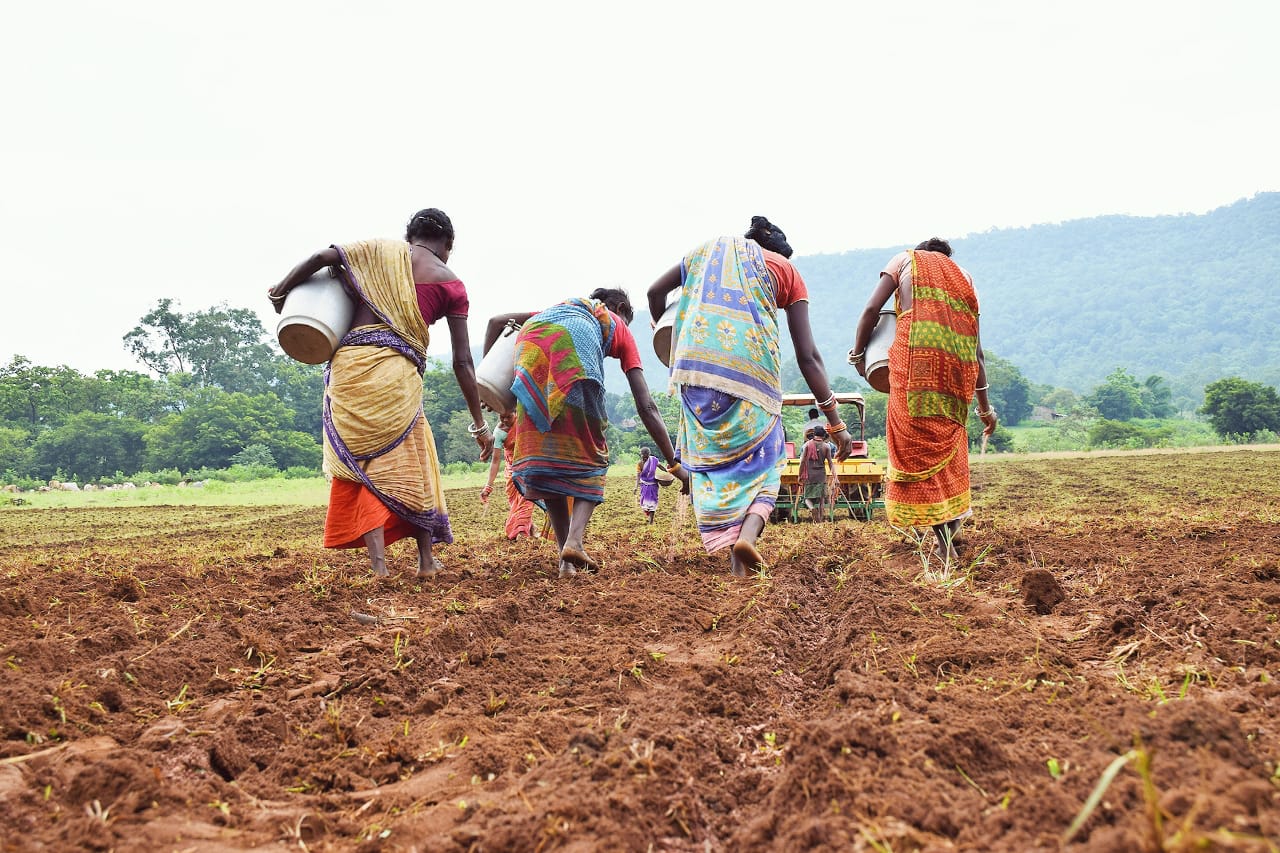
Maize is a staple crop that requires a limited amount of water and inputs, and earns farmers a profit, thanks to its growing demand as food and feed for livestock. Adivasi women farmers in India’s Odisha state are increasing their yields by applying improved maize intensification technologies.
The Cereal Systems Initiative for South Asia (CSISA), led by the International Maize and Wheat Improvement Center (CIMMYT), is providing technical support to the Association for Development Initiatives, which implements the Odisha Primitive Tribal Group Empowerment and Livelihood Improvement Program (OPELIP) and the Odisha State Department of Agriculture at Gudugudia in Mayurbhanj.
“CSISA’s technical support to the women, focusing on improved maize cultivation techniques, helped the women improve their understanding, their capacity and their yields,” said Wasim Iftikar, Research Associate at CIMMYT. Improved maize hybrids, precision nutrient management techniques and improved weed management practices have helped the women increase their yields. This year the group harvested more than 3,300 kg from seven acres of land.
“We never thought we could earn money and support our families through maize cultivation. This is an eye-opener for us. We are planning to increase the area of cultivation for maize and will convince our family members and other women to join us,” says farmer Joubani Dehuri.
To view a photo essay recognizing these women and their work in honor of International Women’s Day 2019, please click here: https://adobe.ly/2ED9sns
The Cereal Systems Initiative for South Asia (CSISA) is a regional initiative to sustainably increase the productivity of cereal-based cropping systems, thus improving food security and farmers’ livelihoods in Bangladesh, India and Nepal. CSISA works with public and private partners to support the widespread adoption of resource-conserving and climate-resilient farming technologies and practices. The initiative is led by the International Maize and Wheat Improvement Center (CIMMYT), implemented jointly with the International Food Policy Research Institute (IFPRI) and the International Rice Research Institute (IRRI). It is funded by the U.S. Agency for International Development (USAID) and the Bill & Melinda Gates Foundation.
Assessing the effectiveness of a “wheat holiday” for preventing blast in the lower Gangetic plains
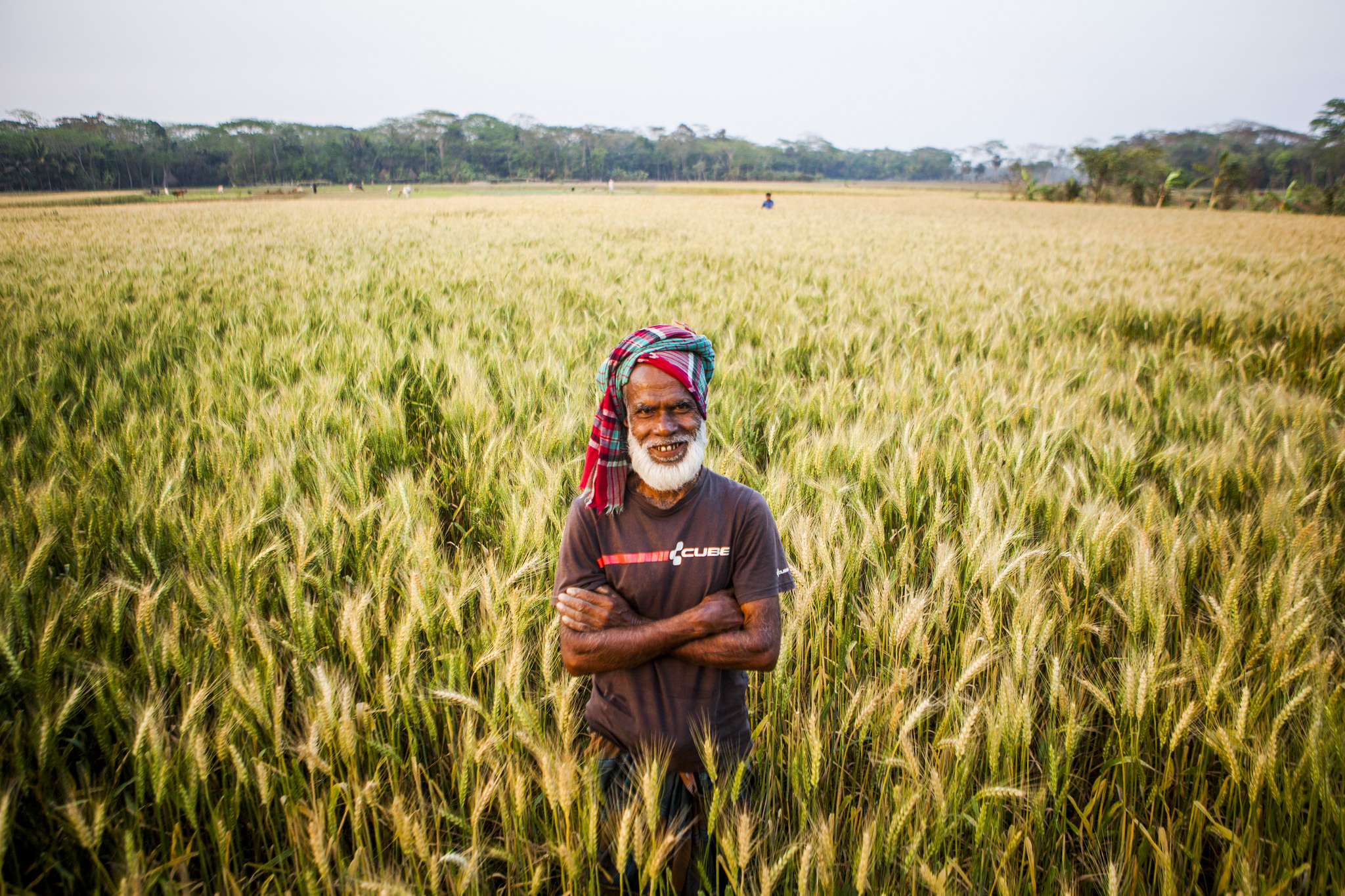
Wheat blast — one of the world’s most devastating wheat diseases — is moving swiftly into new territory in South Asia.
In an attempt to curb the spread of this disease, policymakers in the region are considering a “wheat holiday” policy: banning wheat cultivation for a few years in targeted areas. Since wheat blast’s Magnaporthe oryzae pathotype triticum (MoT) fungus can survive on seeds for up to 22 months, the idea is to replace wheat with other crops, temporarily, to cause the spores to die. In India, which shares a border of more than 4,000 km with Bangladesh, the West Bengal state government has already instituted a two-year ban on wheat cultivation in two districts, as well as all border areas. In Bangladesh, the government is implementing the policy indirectly by discouraging wheat cultivation in the severely blast affected districts.
CIMMYT researchers recently published in two ex-ante studies to identify economically feasible alternative crops in Bangladesh and the bordering Indian state of West Bengal.
Alternative crops
The first step to ensuring that a ban does not threaten the food security and livelihoods of smallholder farmers, the authors assert, is to supply farmers with economically feasible alternative crops.
In Bangladesh, the authors examined the economic feasibility of seven crops as an alternative to wheat, first in the entire country, then in 42 districts vulnerable to blast, and finally in ten districts affected by wheat blast. Considering the cost of production and revenue per hectare, the study ruled out boro rice, chickpeas and potatoes as feasible alternatives to wheat due to their negative net return. In contrast, they found that cultivation of maize, lentils, onions, and garlic could be profitable.
The study in India looked at ten crops grown under similar conditions as wheat in the state of West Bengal, examining the economic viability of each. The authors conclude that growing maize, lentils, legumes such as chickpeas and urad bean, rapeseed, mustard and potatoes in place of wheat appears to be profitable, although they warn that more rigorous research and data are needed to confirm and support this transition.
Selecting alternative crops is no easy task. Crops offered to farmers to replace wheat must be appropriate for the agroecological zone and should not require additional investments for irrigation, inputs or storage facilities. Also, the extra production of labor-intensive and export-oriented crops, such as maize in India and potatoes in Bangladesh, may add costs or require new markets for export.
There is also the added worry that the MoT fungus could survive on one of these alternative crops, thus completely negating any benefit of the “wheat holiday.” The authors point out that the fungus has been reported to survive on maize.
A short-term solution?
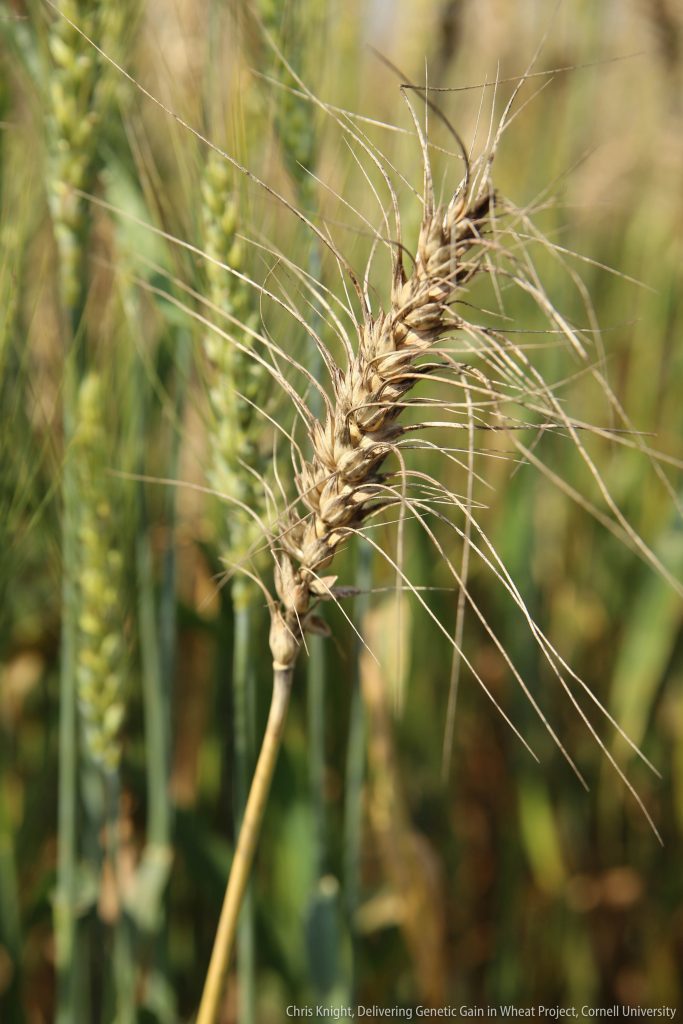
In both studies, the authors discourage a “wheat holiday” policy as a holistic solution. However, they leave room for governments to pursue it on an interim and short-term basis.
In the case of Bangladesh, CIMMYT agricultural economist and lead author Khondoker Mottaleb asserts that a “wheat holiday” would increase the country’s reliance on imports, especially in the face of rapidly increasing wheat demand and urbanization. A policy that results in complete dependence on wheat imports, he and his co-authors point out, may not be politically attractive or feasible. Also, the policy would be logistically challenging to implement. Finally, since the disease can potentially survive on other host plants, such as weeds and maize, it may not even work in the long run.
In the interim, the government of Bangladesh may still need to rely on the “wheat holiday” policy in the severely blast-affected districts. In these areas, they should encourage farmers to cultivate lentils, onions and garlic. In addition, in the short term, the government should make generic fungicides widely available at affordable prices and provide an early warning system as well as adequate information to help farmers effectively combat the disease and minimize its consequences.
In the case of West Bengal, India, similar implications apply, although the authors conclude that the “wheat holiday” policy could only work if Bangladesh has the same policy in its blast-affected border districts, which would involve potentially difficult and costly inter-country collaboration, coordination and logistics.
Actions for long-term success
The CIMMYT researchers urge the governments of India and Bangladesh, their counterparts in the region and international stakeholders to pursue long-term solutions, including developing a convenient diagnostic tool for wheat blast surveillance and a platform for open data and science to combat the fungus.
A promising development is the blast-resistant (and zinc-enriched) wheat variety BARI Gom 33 which the Bangladesh Agricultural Research Institute (BARI) released in 2017 with support from CIMMYT. However, it will take at least three to five years before it will be available to farmers throughout Bangladesh. The authors urged international donor agencies to speed up the multiplication process of this variety.
CIMMYT scientists in both studies close with an urgent plea for international financial and technical support for collaborative research on disease epidemiology and forecasting, and the development and dissemination of new wheat blast-tolerant and resistant varieties and complementary management practices — crucial steps to ensuring food security for more than a billion people in South Asia.
| Wheat blast impacts
First officially reported in Brazil in 1985, where it eventually spread to 3 million hectares in South America and became the primary reason for limited wheat production in the region, wheat blast moved to Bangladesh in 2016. There it affected nearly 15,000 hectares of land in eight districts, reducing yield by as much as 51 percent in the affected fields. Blast is devilish: directly striking the wheat ear, it can shrivel and deform the grain in less than a week from the first symptoms, leaving farmers no time to act. There are no widely available resistant varieties, and fungicides are expensive and provide only a partial defense. The disease, caused by the fungus Magnaporthe oryzae pathotype triticum (MoT), can spread through infected seeds as well as by spores that can travel long distances in the air. South Asia has a long tradition of wheat consumption, especially in northwest India and Pakistan, and demand has been increasing rapidly across South Asia. It is the second major staple in Bangladesh and India and the principal staple food in Pakistan. Research indicates 17 percent of wheat area in Bangladesh, India, and Pakistan — representing nearly 7 million hectares – is vulnerable to the disease, threatening the food security of more than a billion people. |
CIMMYT and its partners work to mitigate wheat blast through projects supported by U.S. Agency for International Development (USAID), the Bill & Melinda Gates Foundation, the Australian Centre for International Agricultural Research (ACIAR), the Indian Council for Agricultural Research (ICAR), the CGIAR Research Program on Wheat and the CGIAR Platform for Big Data in Agriculture.
Read the full articles:
- Averting Wheat Blast by Implementing a ‘Wheat Holiday’: In Search of Alternative Crops in West Bengal, India by Khondoker A. Mottaleb, Pawan K. Singh, Kai Sonder, Gideon Kruseman, Olaf Erenstein (PLOS One, February 2019)
- Alternative use of wheat land to implement a potential wheat holiday as wheat blast control: In search of feasible crops in Bangladesh by Khondoker Abdul Mottaleb, Pawan Kumar Singh, Xinyao He, Akbar Hossain, Gideon Kruseman, Olaf Erenstein (Land Use Policy, March 2019)
BISA and PAU awarded for collaborative work on residue management
The Borlaug Institute for South Asia-Punjab Agricultural University (BISA-PAU) joint team recently received an award from the Indian Society for Agricultural Engineers (ISAE) in recognition of their work on rice residue management using the Super Straw Management System, also known as Super SMS.
Developed and recommended by researchers at BISA and PAU in 2016, the Super SMS is an attachment for self-propelled combine harvesters which offers an innovative solution to paddy residue management in rice-wheat systems.
The Punjab government has made the use of the Super SMS mandatory for all combine harvesters in northwestern India.
The Super SMS gives farmers the ability to recycle residues on-site, reducing the need for residue burning and thereby reducing environmental pollution and improving soil health. Instead, the Super SMS helps to uniformly spread rice residue, which is essential for the efficient use of Happy Seeder technology and maintaining soil moisture in the field.
Harminder Singh Sidhu, a senior research engineer with the International Maize and Wheat Improvement Center (CIMMYT) working at BISA, stressed the need for more sustainable methods of dealing with residue. “Happy Seeder was found to be a very effective tool for direct sowing of wheat after paddy harvesting, using combine harvesters fitted with Super Straw Management System.”
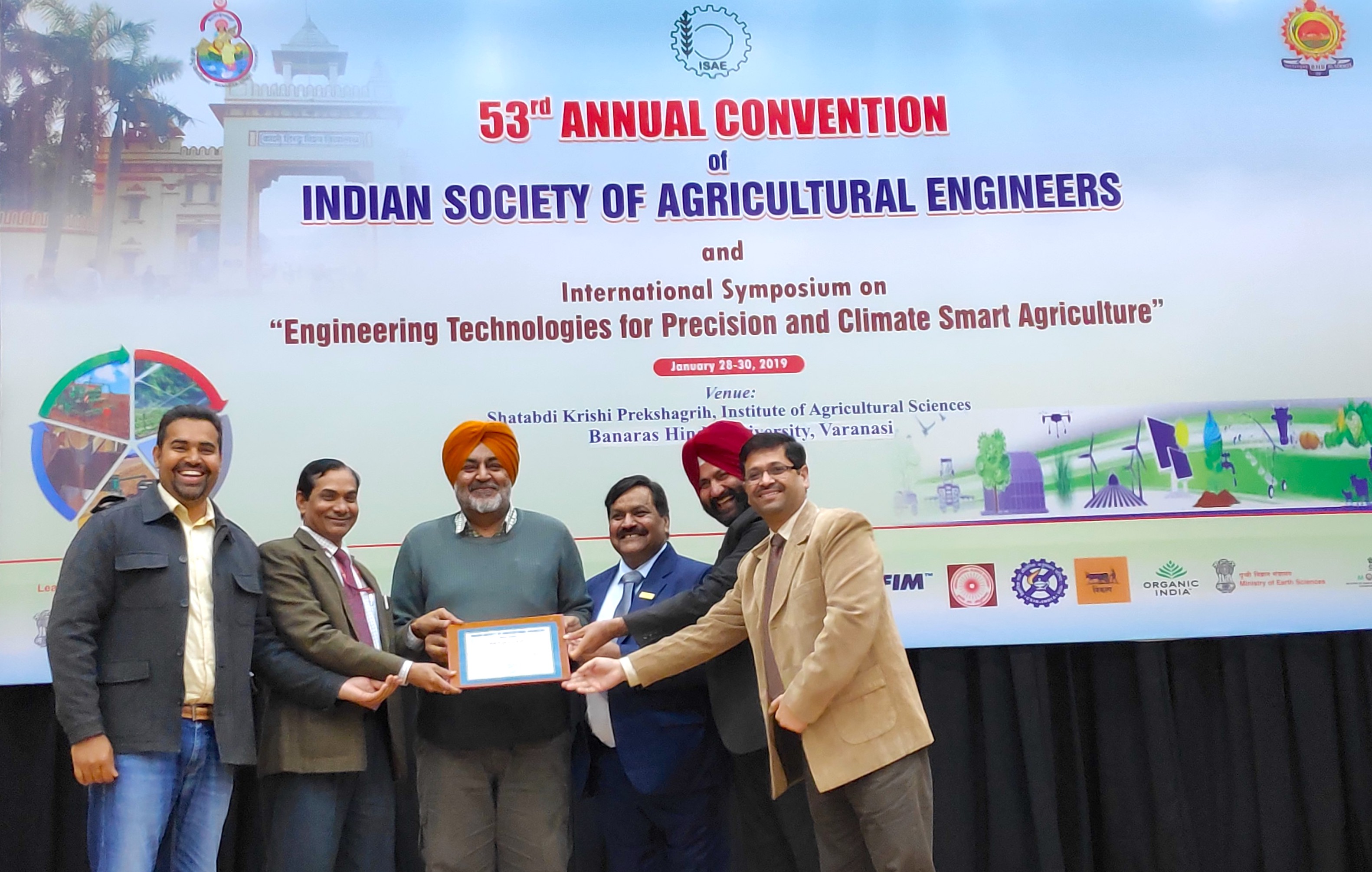
BISA-PAU researchers received the ISAE Team Award 2018 at the 53rd Annual Convention of ISAE, held from January 28 to January 30, 2019, at Baranas Hindu University in Varanasi, Uttar Pradesh state.
The director general of the Indian Council of Agricultural Research (ICAR), Trilochan Mohapatra, presented the award, acknowledging it as “a real team award which is making a difference on the ground.”
The recipients acknowledged the role of local industry partner New Gurdeep Agro Industries for its contributions to promoting the adoption of this machinery. Within eight months of commercialization in the Indian state of Punjab, over 100 manufacturers had begun producing the Super SMS attachment. Currently, more than 5,000 combine harvesters are equipped with it.
Finding the story behind weeds
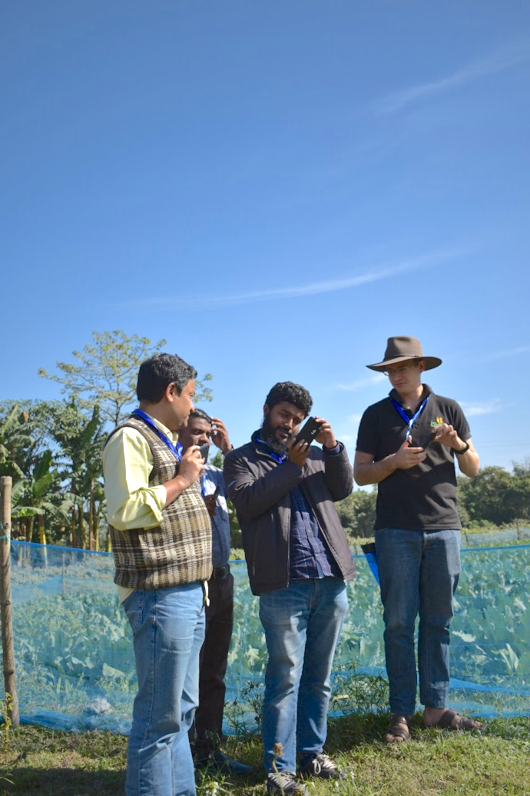
The main focus of the Sustainable and Resilient Farming Systems Intensification (SRFSI) project is on conservation agriculture technologies. Since farmers may face an increase in weeds after adopting zero-till planters, however, more research is needed about how farmers are dealing with weed.
One of the research objectives of the project is to understand farmers’ knowledge, perception, and practices of conservation agriculture. To this end, researchers are using the Photovoice methodology in Cooch Behar (West Bengal, India), Rongpur (Bangladesh) and Sunsari (Nepal) to collect relevant data on weed management practices.
Photovoice is a visual qualitative research method that allows people to express their perspectives through photographs. Photography can be used for evaluation purposes, through storytelling exercises.
On December 6-7, 2019, field technicians in Bangladesh, India and Nepal participated in a training about this methodology. They learned the rationale of Photovoice, its technical and logistic aspects, as well as the ethical considerations and the need to collect consent forms.
Participants also learned how to take pictures of inter-row cultivation and weeds on the farm, and how to confirm the geolocation of the farm.
Worth a thousand words
Using the Photovoice method, 30 households will be explored, including their labor allocation and decision-making dynamics around the implementation of conservation agriculture practices.
The effectiveness of this approach will emerge as smallholder farmers present their perspectives through photographs accompanied by their narratives.
Activities will be monitored on weekly basis.
The SRFSI project, funded by the Australian Centre for International Agricultural Research (ACIAR) and led by the International Maize and Wheat Improvement Center, is set to improve the productivity, profitability and sustainability of smallholder agriculture in the Eastern Gangetic Plains of Bangladesh, India and Nepal, by promoting sustainable intensification based on conservation agriculture technologies.
Experts identify policy gaps in fertilizer application in India
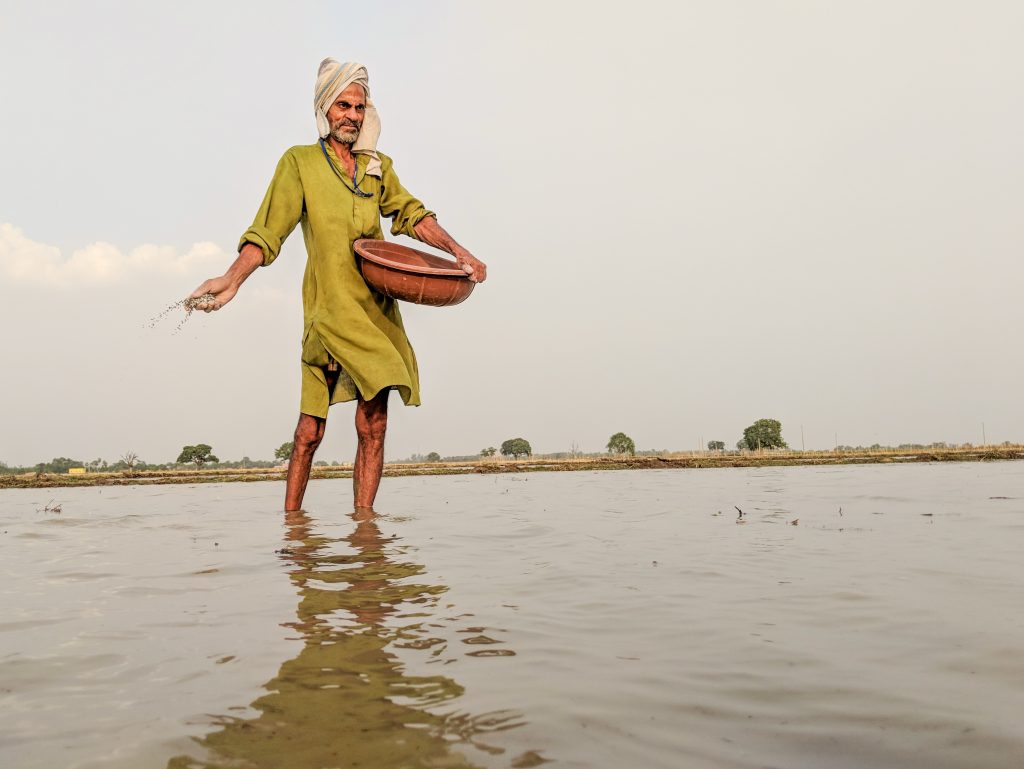
NEW DELHI (CIMMYT) — Imbalanced application of different plant nutrients through fertilizers is a widespread problem in India. The major reasons are lack of adequate knowledge among farmers about the nutritional requirement of crops, poor access to proper guidelines on the right use of plant nutrients, inadequate policy support through government regulations, and distorted and poorly targeted subsidies.
This context makes it necessary to foster innovation in the fertilizer industry, and also to find innovative ways to target farmers, provide extension services and communicate messages.
A dialogue on “Innovations for promoting balanced application of macro and micro nutrient fertilizers in Indian agriculture” facilitated discussion on this issue. Representatives from key fertilizer industries, state governments, research institutions and the Indian Council of Agricultural Research gathered in New Delhi, India, on December 12, 2018. This dialogue was part of the Cereal Systems Initiative for South Asia (CSISA) and was organized by the International Food Policy Research Institute (IFPRI) and the International Plant Nutrition Institute (IPNI).
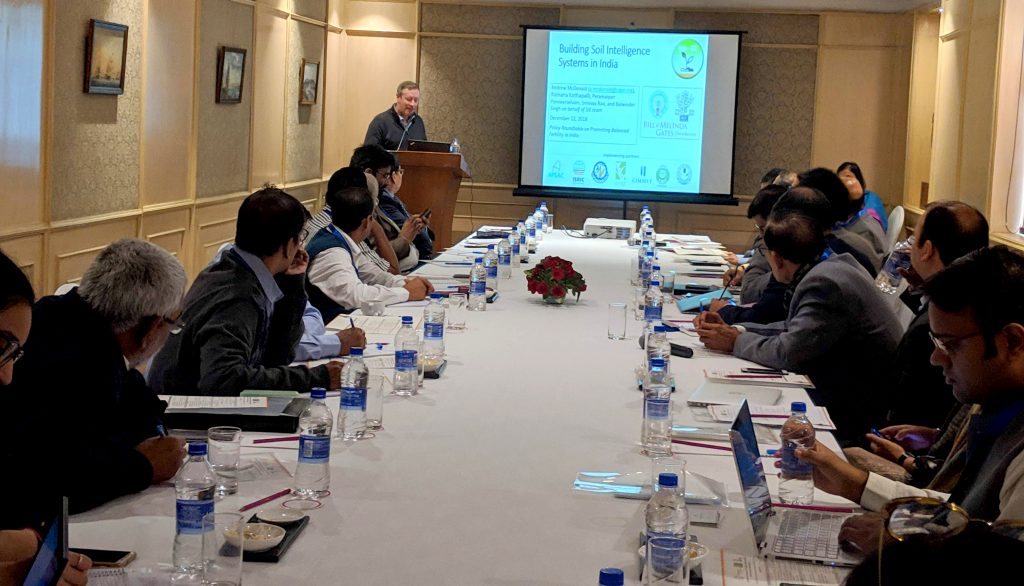
The Director General of the Fertilizer Association of India (FAI), Shri Satish Chander, pointed out that new-product approvals in India take approximately 800 days. However, he explained, this delay is not the biggest problem facing the sector: other barriers include existing price controls that are highly contingent on political myths.
IFPRI researcher Avinash Kishore presented evidence contradicting the myth that farmers are highly sensitive to any price change. He presented data demonstrating that farmers’ demand for Urea and DAP remained highly price inelastic during periods of steep price increases, in 2011 and 2012.
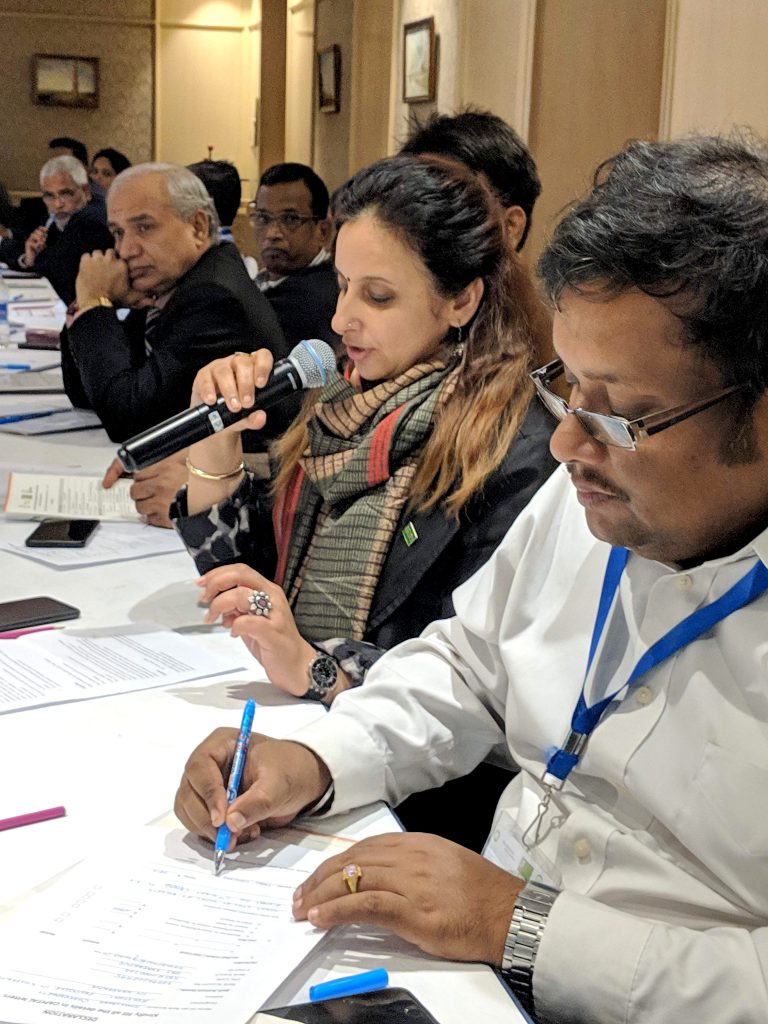
The Director of the South Asia Program at IPNI, T. Satyanarayana, highlighted the importance of micronutrients in promoting balanced fertilization of soils and innovative methods for determining soil health.
Andrew McDonald, from the International Maize and Wheat Improvement Center (CIMMYT), presented the new Soil Intelligence System for India, which employs innovative approaches to soil health assessments.
Farmers’ representative Ajay Vir Jakhar elaborated on the failure of underfunded extension systems to reach and disseminate relevant, factual and timely messages to vast numbers of farmers.
Other representatives from the fertilizer industry touched upon the need to identify farmer requirements for risk mitigation, labor shortages and site-specific nutrient management needs for custom fertilizer blends. Participants also discussed field evidence related to India’s soil health card scheme. Ultimately, discussions held at the roundtable helped identify relevant policy gaps, which will be summarized into a policy brief.
The Cereal Systems Initiative for South Asia project is led by the International Maize and Wheat Improvement Center (CIMMYT) in partnership with the International Rice Research Institute (IRRI) and the International Food Policy Research Institute (IFPRI). It is funded by the U.S. Agency for International Development (USAID) and the Bill & Melinda Gates Foundation.

